Tired of driving to the range? How about building your own backyard shooting range?
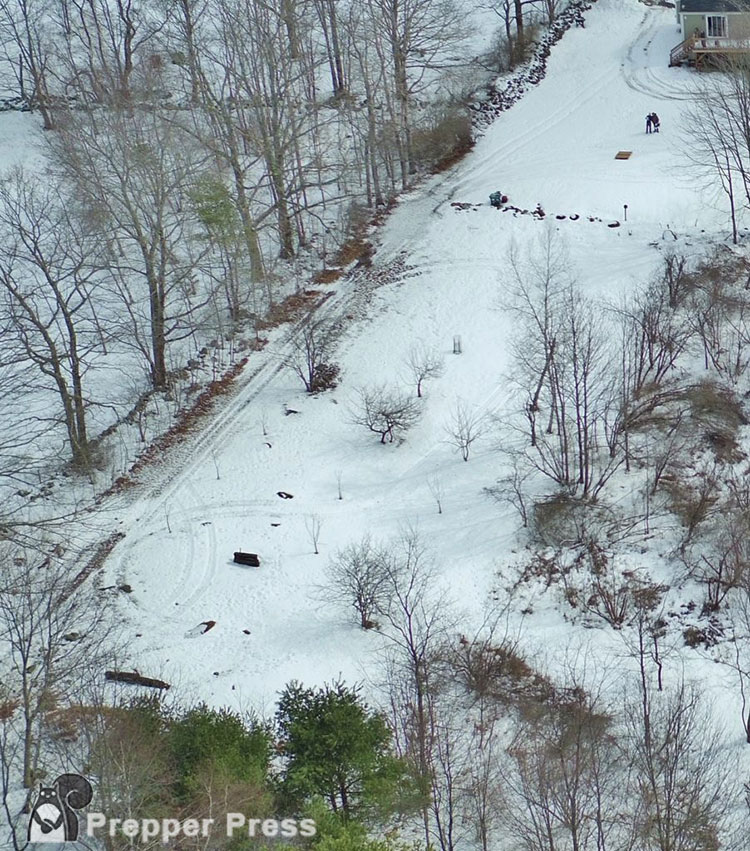
I built my own shooting range despite having access to a professional range. You cannot beat the ease of access by just walking out your door and setting up to shoot. You are apt to shoot more often because it’s so easy, and that means you’ll be a better shooter by making your own personal backyard shooting range.
Shooting Range Safety Concerns
One fine November morning, after setting up our indoor range for some handgun training, I headed back outside for the final detail. My agency’s standard operating procedure called for the display of a red flag whenever firing was in progress and, as I slipped its wooden pole into the metal socket beside the door, a glint of copper caught my eye.
Just below the socket at nose level, the rear half of a bullet was visible in the trim. Judging by its steep downward angle and the hilltop location of our range, it had almost certainly been fired skyward. Eventually, I was able to dig the bullet out fully intact. Closer examination revealed a soft-point Spitzer type of .243-caliber, weighing 100 grains. The imbedded shank of the bullet provided a rough indication of its path which coincided with a wooded area a couple miles away. Perhaps some bored deer took a crack at a crow in a tree. The irony was its final resting spot – a shooting range!
Errant Bullets
I couldn’t help but think about the repercussions if the situation was reversed and the door frame was that of a local home. The fact that no centerfire rifle bullet had ever been fired within the proximity of our range would matter little, nor would its orientation (the opposite direction) – at least, not initially. Heck, most residents including the press, probably won’t know the difference between a .243 or .40-caliber pistol. Instead the story would center on a suspect bullet that originated from the vicinity of the range.
The morale of the story? Actually, there are at least two. The first applies to us all: If you shoot it, you own it! There are many common gun safety violations. Pulling the trigger where the bullet might travel too far is just another. The second morale is even a bullet remotely looks like it came from your range – it did, especially with unsupportive neighbors.
More than one gun club has had to deal with complaints of errant bullets, on top of noise. The same concerns apply to any DIY shooting range. One thing’s for sure, I’ve noticed a real spike in shooting throughout my neighborhood. In some urban areas this might result in a low-crawl to the center of a room while awaiting the appearance of a SWAT unit. Here, it just means someone’s “shootin’ out back.” There are probably six neighbors within a mile of my house that shoot fairly often on their properties – including me. We’re rural so it works, but safety dictates more than just a target set on the lawn.
The 100-yard range behind my house is nothing fancy, but its features are based on experience developing previous ranges. One nearby site is a very active outdoor state law enforcement facility. Thirty years later, it’s going stronger than ever, thanks in part to planning. Similar backyard range strategies could prevent future hassles for you.
Defining a Backyard Shooting Range
As its name implies, we’re talking about a fairly basic range. There could be a shooting bench or two, but things like covered firing lines represent another level of sophistication. Same for overhead baffle systems engineered to contain projectiles that escape a primary backstop. For our purposes, the backstop is a pile of dirt (a berm) or hillside capable of capturing projectiles with a safe downrange area.
If you live in a highly developed location, you’re probably out of luck. I’ve seen some makeshift archery “ranges” in suburban locales that were pretty scary. That said, airguns could offer residential possibilities through basement ranges. But that’s a topic for a future post.
3 Considerations for a DIY Shooting Range
Let’s navigate through an outdoor range checklist.
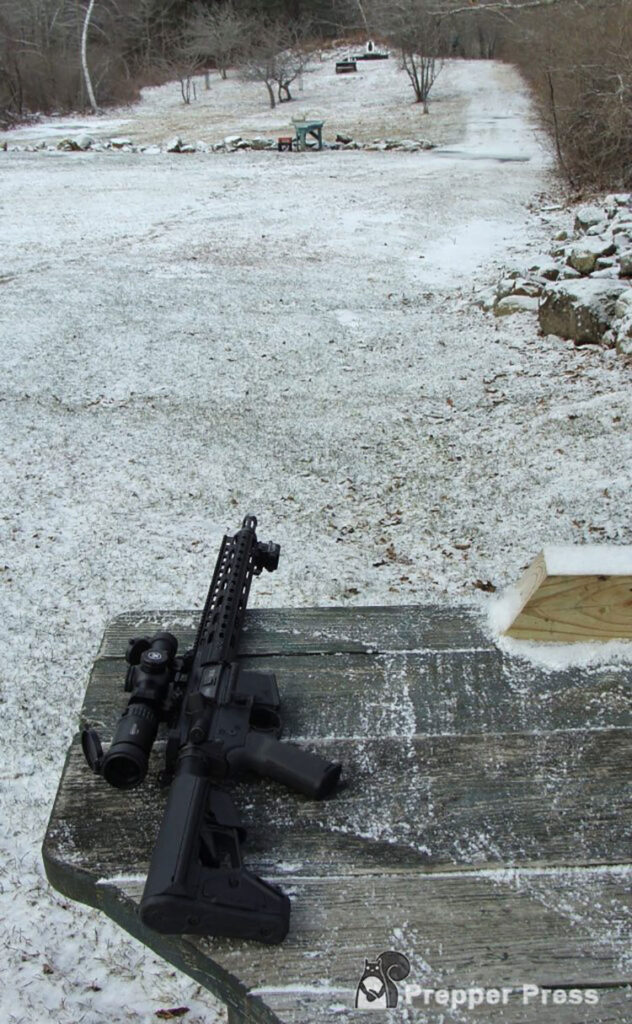
1) Do You Have Enough Space?
Assuming some space is available, what are you hoping to shoot? Centerfire rifles require more space than most centerfire handguns due to their greater range. Some folks are dismissive of .22 rimfires, but they can travel considerable distances, especially if fired skyward. What goes up will come down!
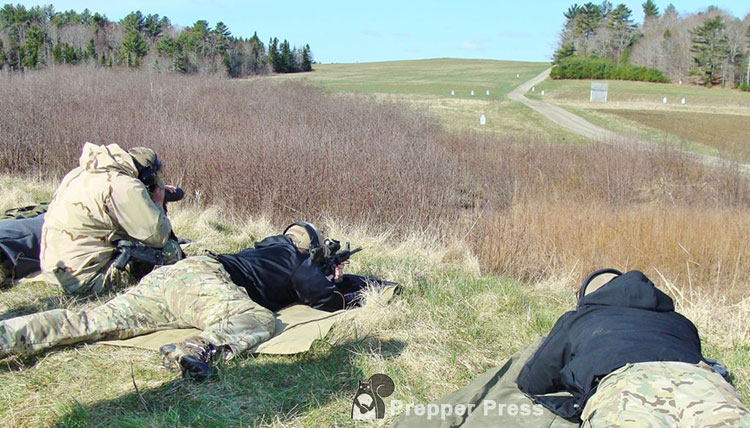
The opening story is an example of a typical high-power rifle that can travel more than two miles if fired at a 30-degree upward angle. Today’s hugely popular .223/5.56 loads won’t be far behind. The numerous handgun calibers from .38 Special through 10mm can travel more than a mile. Even a basic .22 LR box will display a warning indicating a max range of a mile or more. Some of the latest air-powered .22-caliber “pellet guns” start out at similar velocities but quickly decelerate, which limits their carrying range. Better factor in a half-mile.
Like airguns, shotgun trap and skeet ranges also get by with less space through the use of smaller shot pellets (#7 ½ or less). Their maximum shot-fall distances are less than 300 yards but, of course, buckshot or slugs will carry much further. The NRA is a good source for range designs, and they also list some max ranges on their website.
Again, if you shoot it, you own it. Anything fired from a backyard range had best stay on your property. Of course, what’s around you also matters. A great tool to pull all of this information together is Google Earth. Beyond a fairly detailed satellite view, you can utilize its distance scale to calculate available down-range distances with great precision in miles, yards, or feet. I’ve scaled the distances of our state-run range and found them to be a perfect match.
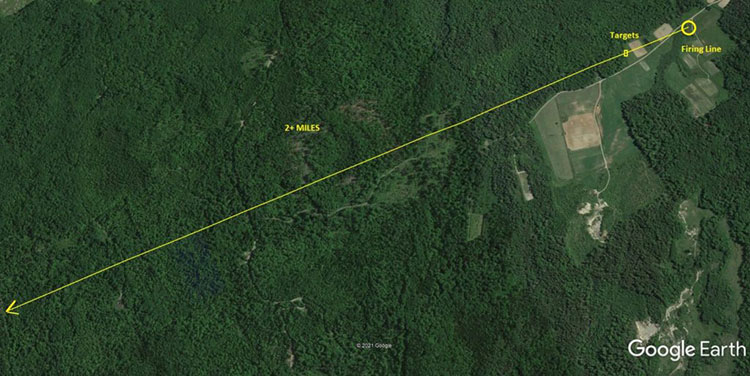
2) What About Neighbors?
If your neighbors aren’t on board complaints are likely, so you might as well start with them before going further. It’s almost guaranteed they’ll be worried about projectile containment. Beyond immediate family members or grandkids, some may have wandering pets or even livestock. Proper siting, some basic engineering, and a generous amount of courtesy could ally some fears.
Noise is another concern, and it could extend beyond immediate neighbors. Those in my vicinity are okay with the backyard range, but I try not to wear out its welcome. Our summers are short and cool so most “air conditioning” involves open windows. Also, everyone spends time outdoors. To maintain amicable relations I limit most summer shooting to airguns and a smattering of .22 rimfires (.22 Shorts or CCI’s .22 LR Quiets are no louder most airguns in a rifle). During the colder months – most of the year here – we’re all buttoned up tight so noise is less of an issue. Nevertheless, I often use a suppressor.
You might proceed similarly, starting with a low-power airgun. The investment and engineering should be minimal, making it a good first step. The next phase could be a .22 rimfire assuming a suitable backstop exists. Suppressors are a further possibility, although a standard 5.56 load will still be as loud as a high-speed .22 LR due to its supersonic crack. If you can’t clear the neighbor hurdle, further steps are probably moot. For me at least, ongoing hassles and ill will wouldn’t be worth the effort.
Note: some people at greater distances may pop up as new “neighbors” once the shooting starts. You might get a phone call, but a visit from local law enforcement is another possibility. If so, you’ll want your ducks in a row.
3) Are There Legal Restrictions?
In my area all outdoor activities including hunting and fishing still have strong roots. Our local papers run stories about Maine big bucks (as in deer) but we still have restrictions. Statewide, the discharge of a firearm within 100 yards of dwelling is illegal (without the resident’s permission).
Some municipalities have further restrictions. Our county seat has a city ordinance prohibiting the discharge of any firearms within its limits. Another town on its outskirts has an ordinance restricting the discharge of centerfire rifles. Nevertheless, some shooting occurs because airguns and archery equipment are exempt. My town has no such restrictions, but a noise ordinance is in effect from 11:00 PM until 7:00 AM.
Environmental issues could be another concern. Usually, they’re related to use of lead projectiles in proximity to wetlands. A couple shotgun ranges in my region now require steel shot for this reason, which can tie into siting.
All things considered, a keep it simple approach could be best. I wouldn’t expect to need a building permit for a pile of dirt and shooting bench. No sense advertising, though. Removeable target frames are easy to build.
Building a Shooting Range on Your Property
Prior to development of our LE range we considered shot-fall distances (max ranges), projectile containment (backstop and berms), noise, and access. I had a thousand acres to work with so, anticipating some area growth, we settled on a fairly remote site. To this day, we can shoot anything within reason, with no real concerns over noise. The bad news is winter access can be difficult. There’s another less obvious downside, too.
Initial Siting and Layout
Ideally, an outdoor range should face north for optimum light. Regrettably, the above mentioned rage faces south. This decision greatly simplified access and maximized our shot-fall area. BUT, during the heart of winter, its tall earthen backstop is always shaded. As I once found out the hard way, when preceded by a wet fall, it can freeze to the consistency of concrete! Also, the lighting is tough due to the low-angle winter sun.

My backyard shooting range faces west because it has to. The morning light is perfect but late afternoon into evening can be tricky. To simplify mowing, everything except one shooting bench is situated behind the back lawn in an adjacent field.
Backstops
One day the nice OSHA lady pulled in to our government range for an inspection. Her concern was the fire extinguisher inside our range building which wasn’t mounted to a wall bracket. Mine was the height of our backstop which had undergone some settling. Being a foreign concept, this mattered not – although we did get accolades for our first-aid kit.
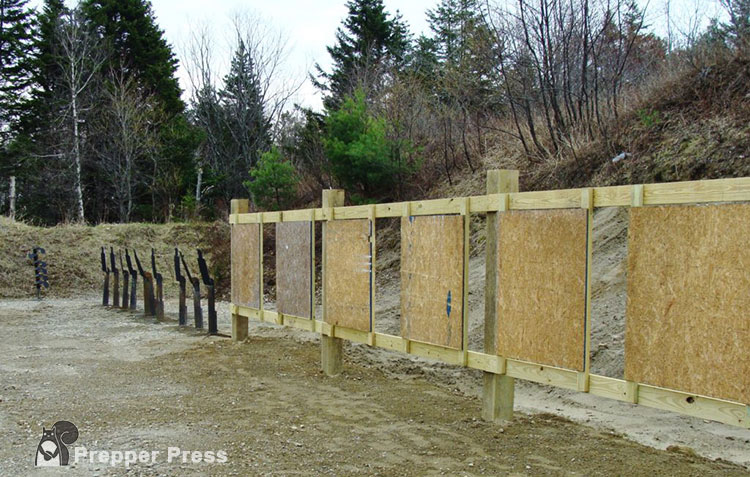
Actually, the height was okay for handguns inside 25 yards or so, but a large-scale “patrol-carbine” project was on our radar. Backing out to 100 yards, the iffy backstop appeared woefully inadequate for containment of 5.56 rounds as a result of the changing angles. Height becomes increasingly important as distances increase.
Besides overshooting the top, projectiles can escape via low strikes that skip skyward as ricochets. Eventually, heavy equipment was procured to greatly increase its height, but we still have our troops charge their AR-15s while pointing them toward the backstop.
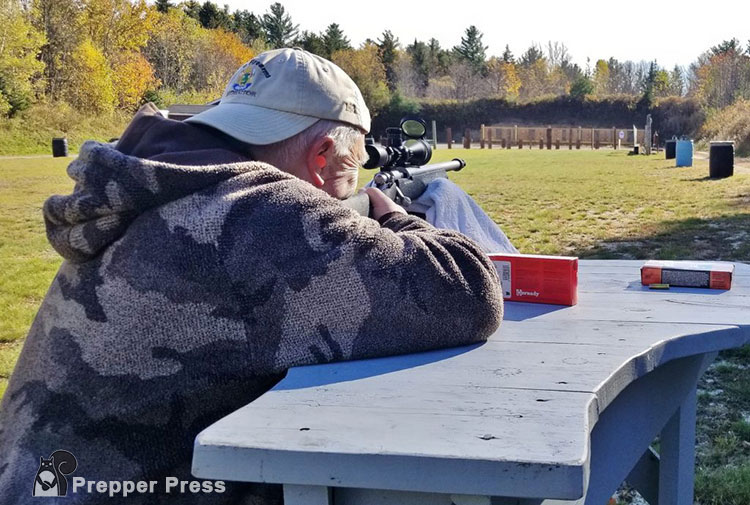
If you can utilize the side of a steep hill or existing pit, so much the better. If not, you’ll need a suitable rock free dirt or sand pile. My home backstop was built with a small excavator, and seeded to control erosion. The simpler alternative for many will be a couple dump truck loads of suitable material. Knee-high railroad tie retaining walls are an option which can double as target bases. However, don’t use them for a main backstop. And, sooner or later, most backstops will need rebuilding.
Controlling Access
As a further control measure we built berms around both sides of our state facility. This not only improved containment but also restricted access. That’s beyond the scope of most of us building a backyard shooting range, but downrange access points should be considered. You won’t anyone to suddenly appear from a trail or woods-line.
Gear for the Shooting Range
My backyard shooting range sits far from the road which makes it harder to see. Partly for this reason, it’s a bit more developed with shooting benches and target arrays. The downside is, such items advertise a shooter, which can be both good and bad. So, let’s stick with the essentials.
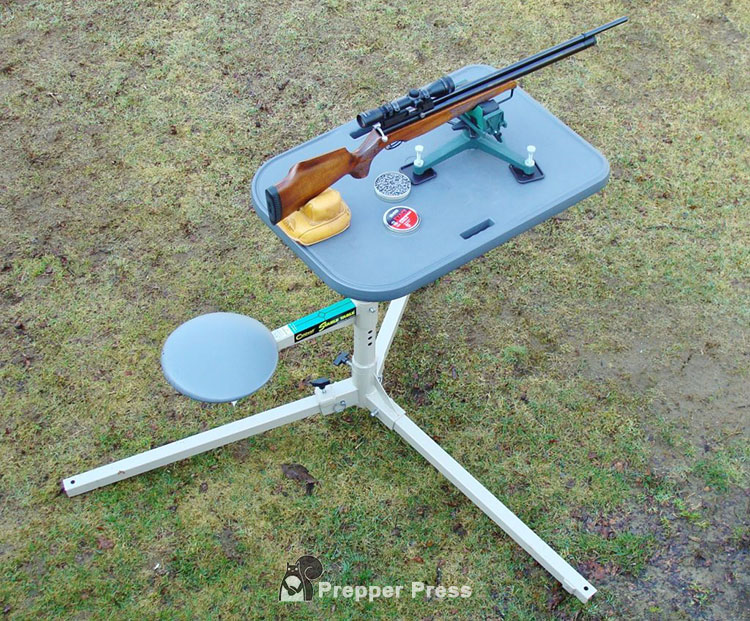
Benches
It’s worth having one for convenience and safety’s sake. An actual shooting bench can be more useful and some commercial types are reasonably portable. I sometimes incorporate one with my backyard shooting range but, for the most part, I rely on two more solid semi-permanent benches.
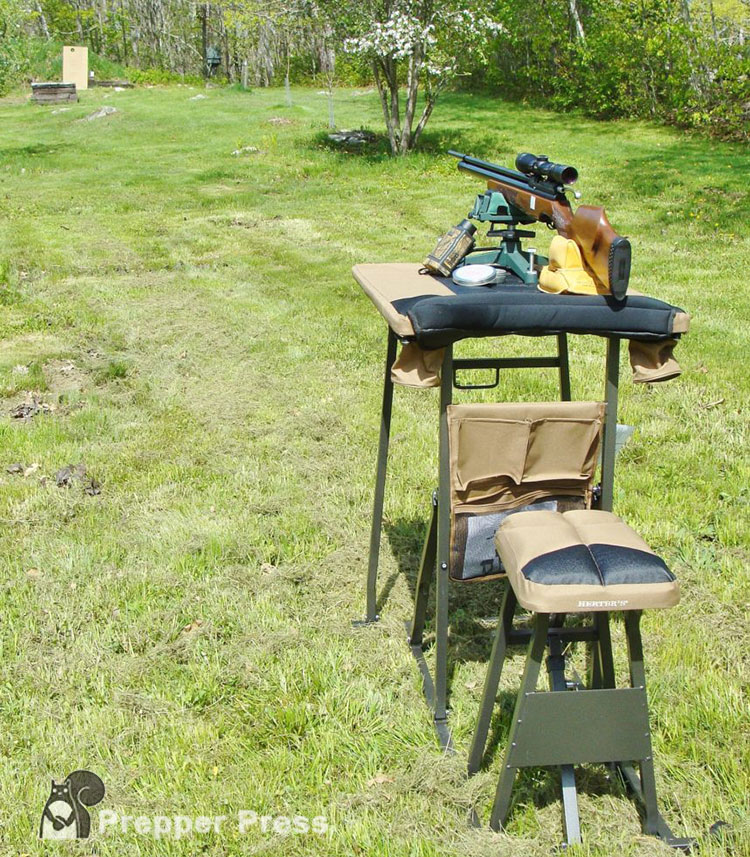
My 100-yard bench is fairly typical but, due to the lay of the land, any mid-range targets will result in rounds impacting below the backstop. The easy solution turned out to be a separate 50-yard bench and target, positioned for safe alignment with the backstop. An ATV sometimes serves as an improvised “bench” when shooting at 25 yards.
Target Systems
For my backyard shooting range, I went with short railroad tie knee-walls which serve as target bases. Removeable frames made from strapping plug in to simple brackets. A white cardboard IPSC target stapled to a frame makes a good backer for many targets.
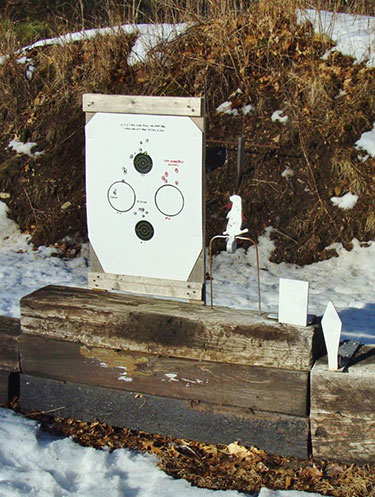
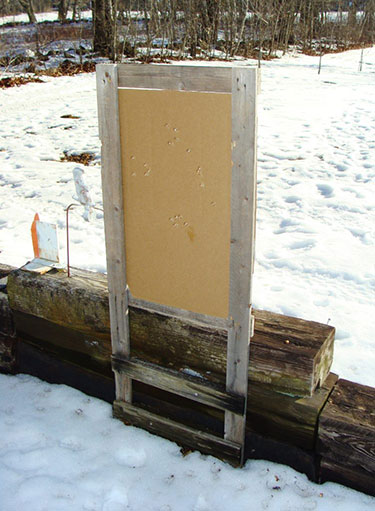
At oddball ranges, portable bases made from strapping are simply placed on the ground to accept a pair of lathe uprights which are stapled to a cardboard backer. The lower the better for less wind-loading (or add weight to the bases).
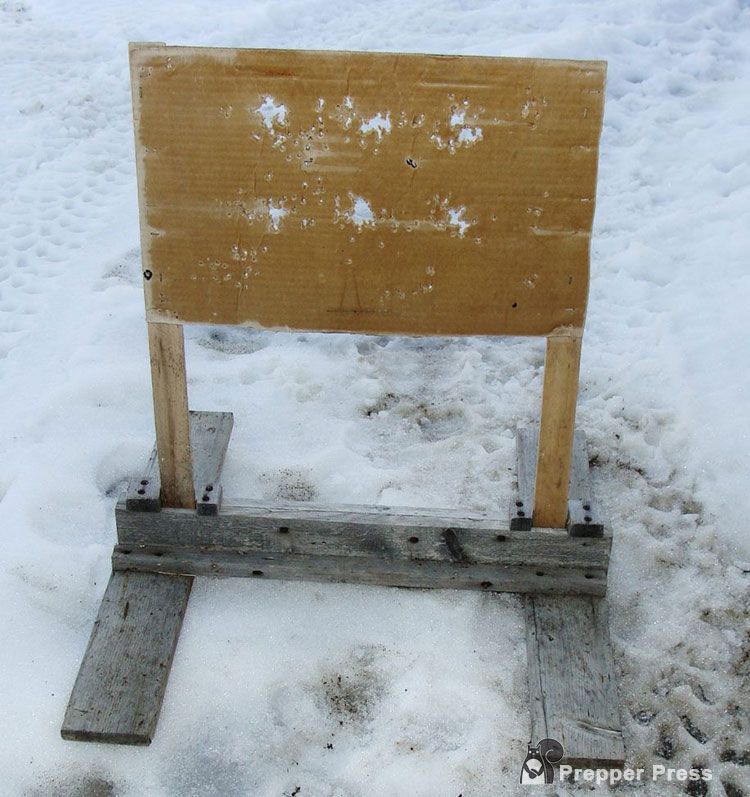
Reactive Targets?
Steel spinner targets and other reactive targets are lots of fun. Some are mounted to my RR tie bases or hung from wooden posts. They’re reserved for airguns or .22 rimfires, partly because of noise, but also to improve containment.
Heavy knock-downs like Pepper Poppers add excitement to combat courses, but “combat courses” and a backyard shooting range may conflict in purpose. These targets can deflect projectiles upward as their impact angles change. Some steel target supports can produce similar effects on a horizontal plane. Soft synthetic spinners are a good alternative and, unlike steel, they’re also quiet, BUT they can shoot back with lower-velocity airgun pellets. FYI, golf balls can as well! Of course, most other plinking targets are fair game.
For a challenge try sniping paintballs off golf tees with your scoped air rifle or .22 rimfire at 40 -50 yards.
Steel cautions: Use hardened commercial targets rated for your firearms. Mild (or cratered) steel can shoot back! Also, heed minimum distance warnings.
Other Gear
I maintain a portable “backyard shooting range kit” which is just a dry-wall bucket containing the basics like staples, targets, spray paint, shooting sandbags, etc. If no rain is in the forecast I may leave it under a bench. The bench seats are just weatherproof milk crates, 1 ½ per bench. During our summer months a portable shooting bench is installed on the back deck and weatherproofed with a grill cover.
Safety and Liability
Beyond containment of all projectiles, unanticipated downrange visitors are a real concern. The NRA Range Manual recommends posting of the surrounding area, along with a wire barrier. The Range Services section of their website is worth a visit, and you’ll find more information on-line through other sources.
I don’t have a wire barrier but I did post the area. The geography also makes access more difficult from downrange. Hearing and eye protection is also a requirement and the latter is especially important if steel targets are involved. In the grand scheme of things, shooting is still among the safest sports but a first-aid kit should be available.
Another concern is insurance. Most of us shoot with fingers crossed but some policies are tailored to shooters. Legal repercussions aren’t cheap and some could be the products of complaints as a few clubs have discovered. At least one incident I recall involved an antagonistic homeowner who actually shot his own dwelling to implicate a range.
Backyard Shooting Range Wrap Up
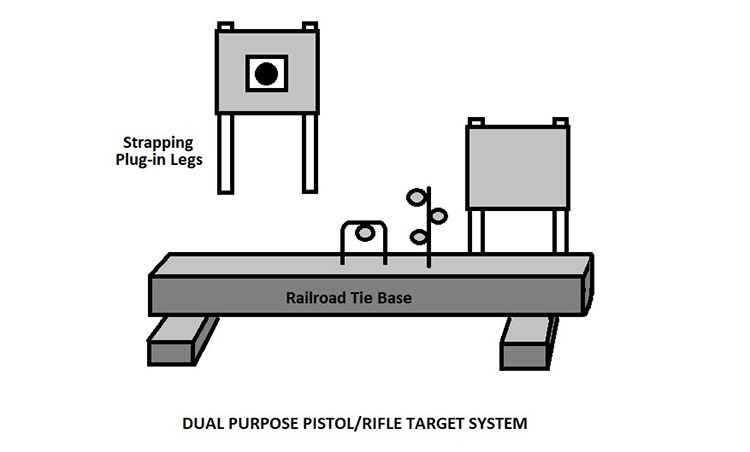
A backyard shooting range can be a pretty simple project. Case in point, a buddy’s rifle range. He ordered up a truck load of sand and had it dumped along the shoulder of a woods road that extended from his backyard. We sunk two upright 4x4s in front of the pile and screwed on a four-foot square target backer (although a realtor sign frame would’ve worked). A 100-yard shooting bench finished the project. The road dead-ends in the middle of his sizeable property and the surrounding area is heavily posted. The “range” is far enough removed that he can shoot whatever he wants.
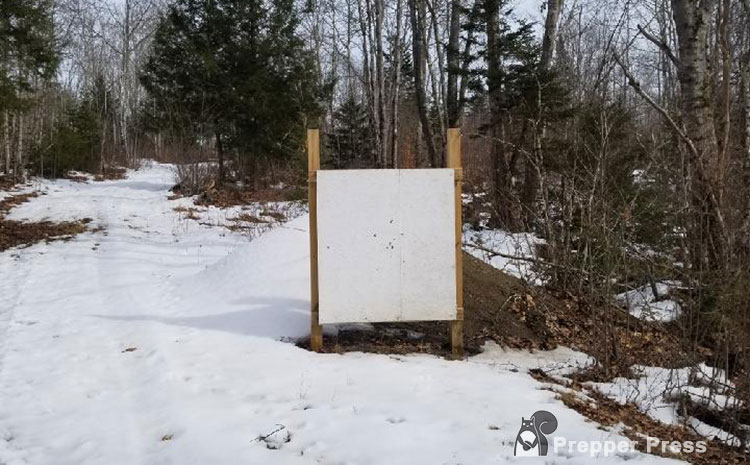
I probably could as well – to a point. But, rather than push the envelope, I reserve the heavier artillery for the more formalized facility, located two miles from the nearest pavement. Believe it or not though, that site did eventually get one noise complaint from a “nearby” resident living at a slightly further distance.
You can’t please everyone but neighborly relations still matter!
Have you built your own backyard shooting range, or are you considering one? Sound off in the comments and let us know how it’s going, or how it went.
